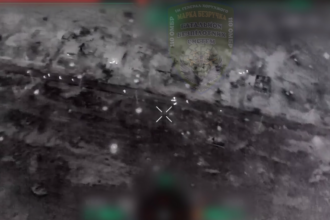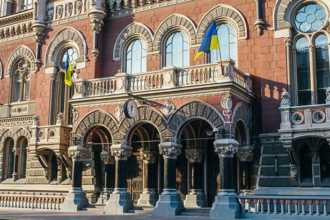Tbilisi Architecture Biennial 2024 (TAB) is one of the most thought-provoking events of the year. Under the theme of ‘Correct Mistakes,’ the Biennial promises to explore new ways of coexisting with our environments–natural, social, and architectural–while taking a critical look at the legacies of modernist interventions and the role of architecture in shaping sustainable futures. The event will take place from October to November and features an ambitious program of physical project, exhibitions, films, and discussions that address local Georgian contexts as well as global architectural discourses.
TAB’s vision: A biennial for a sustainable future
The 2024 Tbilisi Architecture Biennial is organized by TAB, a non-profit organization based in Tbilisi, with the collaboration of numerous international partners. Its goal is to reimagine the urban space through socially and environmentally conscious architecture. TAB, co-founded by Tinatin Gurgenidze and Giga Battiashvili with Dato Zautashvili stands out because it focuses on transforming neglected and underused urban sites, especially those that embody previous engineering and infrastructure projects. This year’s theme addresses the legacy left by these past modernist interventions. It suggests alternative futures via participatory projects and art experimentation.
The biennial’s activities are spread out across Tbilisi’s iconic and symbolic locations, engaging residents in discussions about ecological responsibility, water management and collective urban participation. Projects such as ‘Transforming Legacy – Fog Catcher Obelisk,’ and Cenotaph take a poetic view of water both as a literal resource and a symbolic one. Exhibitions such as ‘An Atlas of Commoning : Places of Collective Production explore practices of collective stewardship.
Architecture and Ecological Crisis
The theme “Correct Mistakes” was inspired by Georgia’s participation at the 18th Venice Architecture Biennale. It reflects the urgent necessity to address human exploitation and destruction of natural landscapes as well as the worsening climate crises. The political turmoil in Georgia, especially around resource extraction and environmental neglect, increased the stakes. The TAB organizers deliberately abandoned traditional architectural exhibitions to focus on documentary, research-driven initiatives that explored the relationship between humans and nature and, by extension, the role of architecture in correcting historical injustices.
Architectural activism was at the forefront of the biennial. The program, which included workshops and symposiums, aimed to foster an interdisciplinary discussion on how architecture can evolve to support environmental resilience. The biennial did not present theoretical models of future urban environments, but instead asked visitors to engage in the reality of Georgia’s environmental degradation. This included the drying of rivers and deforestation of forests, melting glaciers, and mismanagement of water resources.
Opening Highlights at Tbilisi Sea: Transforming Legacy
The Fog Catcher Obelisk project, one of the most evocative in this year’s Biennial, was officially opened at the terraced waterfall, near the Tbilisi Sea, on the 1st October. The installation reclaims an historic site that was once used to inaugurate the Samgori irrigation system. This massive modernist achievement symbolized human dominance over nature. The fog catcher was designed by a group of international participants, including Xenia Michel Kessler Pierre Musy and Romain Iff. It contrasts the domineering legacy with a gentle, eco-friendly technique for collecting water.
The project features an obelisk-shaped fog catcher, reminiscent of Soviet infrastructure. The installation does not reshape nature to meet human demands, but instead collects airborne water droplets and returns them to soil. This gesture represents a harmonious partnership with the environment and offers a reflection on modern architecture’s evolution from a force that dominates to one of reciprocity. The opening was marked by a special performance by Georgian Artist Natia Chikvaidze, which deepened the ritualistic and symbolic dimensions of this transformative work.
Highlight Projects: Engaging environmental crises through artistic practice
The biennial’s commitment towards addressing environmental crises by means of research and activism was exemplified in several standout projects.
Unmapping Energy Geographies was one such project, a collaboration between Tekla Alanishvili and Alexandra Aroshvili. Evelina Gambino and Natalia Nebieridze also worked together on this project. This exhibition explored the interplay between Georgia’s energy infrastructure and global dynamics of control and power. The project examined the often invisible energy networks that power our cities and revealed how these systems contribute towards the exploitation of resources.
In “Common Water Bodies,” Lado Shonia, and Nikoloz Kavatchrelishvili, focused on the critical question of water management in Georgia. A country rich in water, but increasingly plagued with mismanagement and climate-induced dry spells. Their workshop and exhibit explored the cultural significance and environmental impact of Georgia’s rivers, water bodies and lakes. They also looked at the collective responsibilities that have led to the current state of degradation.
The project ‘The weather is nice, let’s panic!’ by Julia Obleitner and Jan Meusburger was a playful but sobering exploration on climate anxiety. The artists used humor to highlight the absurdity of complacency of humans in the face the climate emergency.
In KERA’s “Cenotaph”, forgotten rivers resurface
The Biennial’s other key physical project is ‘Cenotaph’, an installation by the Swiss collective KERA. It explores Tbilisi’s neglected waterways. Many of them have been buried under ground or reduced to dumping sites. The intervention, which is located near Public School No. 144 on Ortachala Street in Tbilisi, draws attention to Dukniskhevi Creek, one of many forgotten rivers. The project’s concept is based on the Greek word “cenotaph”, which means an empty tomb. It pays homage to the buried riverbeds that continue to flow beneath the surface of the city, but are not noticed.
The subtlety of KERA’s installation defines it. A bell suspended above the site mimics the hidden flow of the Creek and encourages visitors to slow down and engage quiet reflection. The intervention is both a tribute to Tbilisi and a wake-up, encouraging the public reconnect with the city’s natural waterways while reflecting on the consequences modern urban expansion. This powerful yet minimalist project aims to raise public awareness about the city’s hidden waterways, and invites us to imagine a future urban environment that honors nature instead of hiding it.
An Atlas of Commoning: A Global Conversation on Urban Commons
TAB 2024’s major exhibition highlight is ‘An Atlas of Commoning – Places of Collaborative Production’, a traveling show produced in collaboration with the German ifa Institut fur Auslandsbeziehungen (IFA) and ARCH+. This exhibition, which was opened at the TBC Concept Flagship in Kote Marjanishvili street, tackles the issue of urban Commons – the shared spaces and resources which form the backbone for social and environmental sustainability.
The exhibition focuses primarily on “commoning”, the collective production and governance such as water, land and communal space. The Atlas, which features case studies from Berlin and Pittsburgh, Montevideo, Buenos Aires and now Tbilisi showcases grassroots projects aimed to reclaim urban spaces for collective usage. The concept of the commons is gaining in importance as the privatization and commercialization public spaces has accelerated in post-Soviet towns like Tbilisi.
This Tbilisi Edition, curated by an international team headed by Stefan Gruber of Carnegie Mellon University explores how Georgian communities organize to protect shared spaces and resist the market-driven urban developments. The accompanying Commoning Tbilisi Symposium, held on October 5, brought together local activists and scholars to discuss collective urban stewardship. This provided a rich intellectual background for the exhibition.
Documentary Screenings – Cinema as a Lens on Architecture
The biennial, in collaboration with the Documentary Association Georgia(DOCA Georgia), featured a series documentary film screenings which tackled environmental and socio-political issues head on. Films such as ‘Stormy Nights,’ and ‘The Water Dragon/Land Underwater’ examined the devastating effects of climate changes on both natural and humans systems. These screenings highlighted the power of documentaries as a tool to engage, educate, and act in accordance with the biennial mission of correcting the mistakes of the previous and envisioning a more sustainable future.
In the next two weeks, film fans will have the chance to explore critical issues related architecture, water and urbanization by way of powerful documentary narratives. As part of the program, the films ‘History of Water’, ‘Medusa’, and ‘Dead Slow Ahead will be screened. Each of these films touches on different aspects of environmental degradation, human agency and resource management.
‘History of Water,’ on the other hand, examines how water shapes civilizations and controls territories. ‘Medusa,’ on the other hand tells a haunting tale of environmental destruction and human resiliency. ‘Dead Slow Ahead’, on the other hand offers a stunning reflection on industrial landscapes. It captures the slow disintegration a cargo vessel as a metaphor of the decay of modern industrial societies. These screenings will stimulate discussions on how documentary films are a vital medium for investigating and telling architectural and environmental history.
Engaging Minds: Lectures and Guided Tours. Exhibitions.
The Tbilisi Architecture Biennial 2024 included a variety of intellectually stimulating lectures and guided tours that deepened the public’s engagement in critical architectural and environmental issues. The opening of the Biennial on September 28th at the Hydrometeorology Institute included a keynote address by Philippe Rahm. He is known for his work in atmospheric architecture and sustainability. This lecture set the tone for the Biennial, which focuses on ecology and the role architecture plays in shaping our response to climate change. His insights into energy geographies, and the impact architecture has on climate, resonated with many exhibitions, including ‘The weather is nice, let’s panic!’ and Unmapping Energy Geographies.
Visitors can also enjoy guided tours such as ‘The River Wept Like a Wound Beast’, which offers curated walks through exhibits that highlight forgotten urban rivers and consequences of rapid urbanization. The guided walk through Tbilisi’s green spaces offered a unique opportunity for those curious about the city’s complex urban forest.
The intellectual rigor of the Biennial continued with symposiums like ‘Commoning Tbilisi’, which brought together local voices and international voices to talk about urban commons. And workshops such as ‘Double Exposure,’ by la-clique where participants could engage in cutting-edge discussions about urbanism and architectural. The Biennial’s intellectual rigor continued with symposiums such as ‘Commoning Tbilisi,’ which brought together local and international voices to discuss urban commons, and workshops like ‘Double Exposure’ by la-clique, where participants could engage in cutting-edge discussions on urbanism and architecture.
A Call to Action Through Reflection and Collaborative Collaboration
TAB 2024 was able to transform the architecture biennial into a platform of critical reflection and activist engagement. The biennial, which focused on research, documentary and environmental justice, challenged visitors and participants to confront the collective mistakes, which have shaped Georgia’s landscapes and eco-systems. The biennial presented tangible, research driven solutions to the environmental crises we face today, instead of abstract architectural concepts.
The biennial highlighted the importance of interdisciplinary cooperation in correcting these errors by bringing together the voices of architects and environmentalists. TAB 2024 is a reminder that as we continue to grapple the consequences of climate changes and environmental degradation, architecture must evolve in order to meet these challenges. It serves not only as a creative expression, but also as a tool to achieve social and ecological transformation.
By Ivan Nechaev
Read More @ georgiatoday.ge




